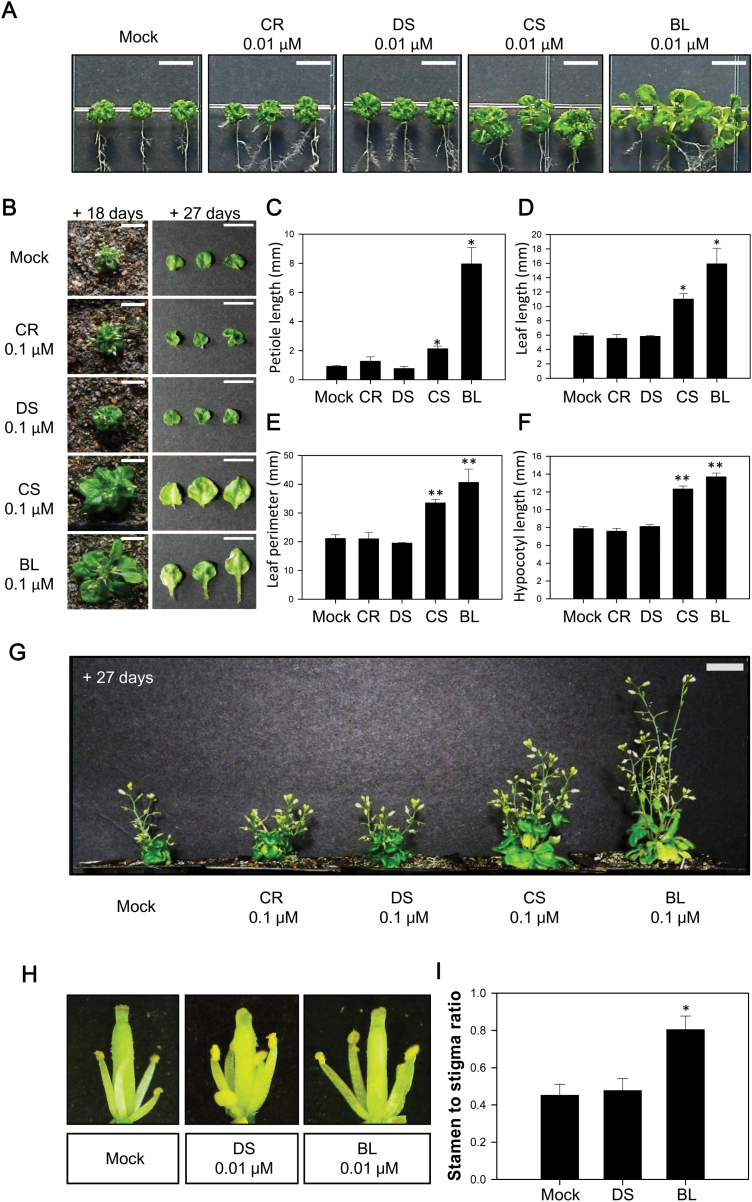Fig. 4.
Reversal of abnormalities in dwf1 through application of BRs. (A) Restoration of shoot growth in 7-day-old dwf1 seedlings after application of 0.01 µM CR, DS, CS, and BL. Scale bar=1 cm. (B–E) Restoration of shoot growth in adult dwf1 plants after application of 0.1 µM CR, DS, CS, and BL. BRs were sprayed 3–5 times a day onto dwf1 for 27 d at an interval of 3 d. A representative result from six individual dwf1 adult plants is shown in (B). Comparison of petiole length (C), leaf length (D), and leaf perimeter (E) after application of 0.01 µM CR, DS, CS, and BL. Each column represents the mean (+SE) of the individual measurements (n>20). (F) Restoration of hypocotyl growth in dwf1 mutant seedlings after application of 0.1 µM CR, DS, CS and BL. Hypocotyl length was measured after 7 d. Each column represents the mean (+SE) of the individual measurements (n>20). Asterisks indicate the statistical significance by Student’s t-test. *P<0.05, **P<0.01 compared with Mock control. (G) Restoration of abnormal stem growth in dwf1 adult plants after application of 0.1µM CR, DS, CS, and BL. BRs were sprayed 3–5 times a day onto dwf1 for 27 d at an interval of 3 d. A representative result from six individual dwf1 intact plants is shown. (H, I) Restoration of stamen development of dwf1 after 0.01 µM DS and BL treatment. After artificial fertilization, BRs were sprayed 3–5 times onto dwf1 flower every day. A representative result from five individual dwf1 flowers is shown in (H). Hormonal effects on phenotypic rescue of less-developed stamen in dwf1 are presented as stigma to stamen length ratio (I). Each column represents the mean (+SE) of the individual measurements (n=5).

